
Proudly automating eHome2 for the Future Homes Standard
eHome2 is a collaboration between Saint-Gobain UK & Ireland and Barratt Developments. It is a three-bed detached house built inside of the University of Salford’s big climatic chamber called Energy House 2.0. The research project aims to test building solutions for future housing and accelerate those involved towards producing low-carbon and net-zero housing. Loxone is one of these solutions being tested and plays a key role as the home automation system, automating all of our own devices as well as third-party ones. Plus, the Loxone system is being used by the university’s research team to conduct the actual study.
What is Energy House 2.0?
Energy House 2.0, developed by the University of Salford, is a remarkable research facility designed to test and evaluate the performance of energy-efficient building materials, technologies, and systems. The two climatic chambers can fit two houses in each, which allows researchers to explore the potential of sustainable solutions in a realistic environment. With the ability to simulate temperatures ranging from -20°C to 40°C, create solar radiation, and even generate rain and snow. Energy House 2.0 is serving as an invaluable platform for advancing progress in the construction industry through high-level stringent testing. The results of the study conducted in this facility will be essential for stakeholders, including policymakers, as they shape future building regulations and standards for the UK housing industry.
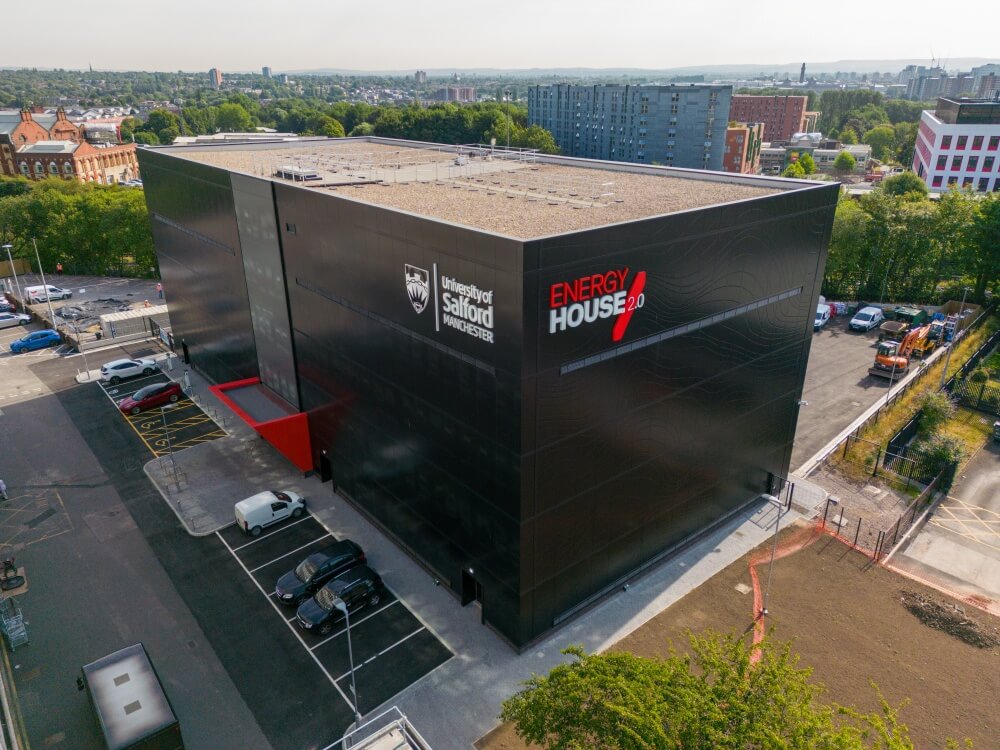
© Saint-Gobain Ltd
The Facts
Location:
Salford, UK
Launch Event:
January 2023
Length of research:
9 months (Results end of 2023)
Spec of house:
New 3-bed detatched family house
Main Collaboration Partners:
Saint-Gobain UK & Ireland, Barratt Developments and University of Salford
Goal of research:
To discover the best solutions for a sustainable future and provide insight as to how these building technologies will stand up to future climates.
What is eHome2?
eHome2 is one of the houses located within Energy House 2.0. It is a collaborative project between Saint-Gobain UK & Ireland and Barratt Developments. The primary aim of eHome2 is to accelerate progress towards low-carbon and net-zero housing, providing valuable insights to guide the industry in meeting the 2025 Future Homes and Building Standards. Over a period of nine months, the house undergoes comprehensive testing by the university to assess how its technology responds to the simulated climatic conditions we are likely to experience in the near future. By investigating and optimising energy-efficient practices and technologies, eHome2 aims to pave the way for the future of sustainable living and inform the development of energy-efficient homes without compromising on the comfort of the occupants.

© Saint-Gobain Ltd
Loxone in eHome2:
Loxone plays a pivotal role in the eHome2 project, serving as the central hub for the home’s technology. The central hub of the Loxone system in eHome2 is, as in any Loxone system, the Miniserver. Located in the cabinet, the Miniserver acts as the brain of the system having a massive influence throughout the whole house not only seamlessly integrating Loxone’s own components and solutions eg LED Spots, Touch switches, burglar alarm, access control, and more. Also, due to the system’s openness, many third-party systems that are part of the research collaboration can be integrated in as well. Through this integration, Loxone enables complete home automation, ensuring effective communication between all of the integrated components so that they work together. Ultimately, Loxone plays a pivotal role in the home’s advanced technology being harmonious. Plus, Loxone provides the researchers with data straight to their email and into a dashboard using the API about the climatic conditions inside and outside eHome2 and what devices are active. Separate from the research team extracting data via the Loxone API, other stakeholders can use the Loxone App to view data based on their permissions from anywhere in the world.
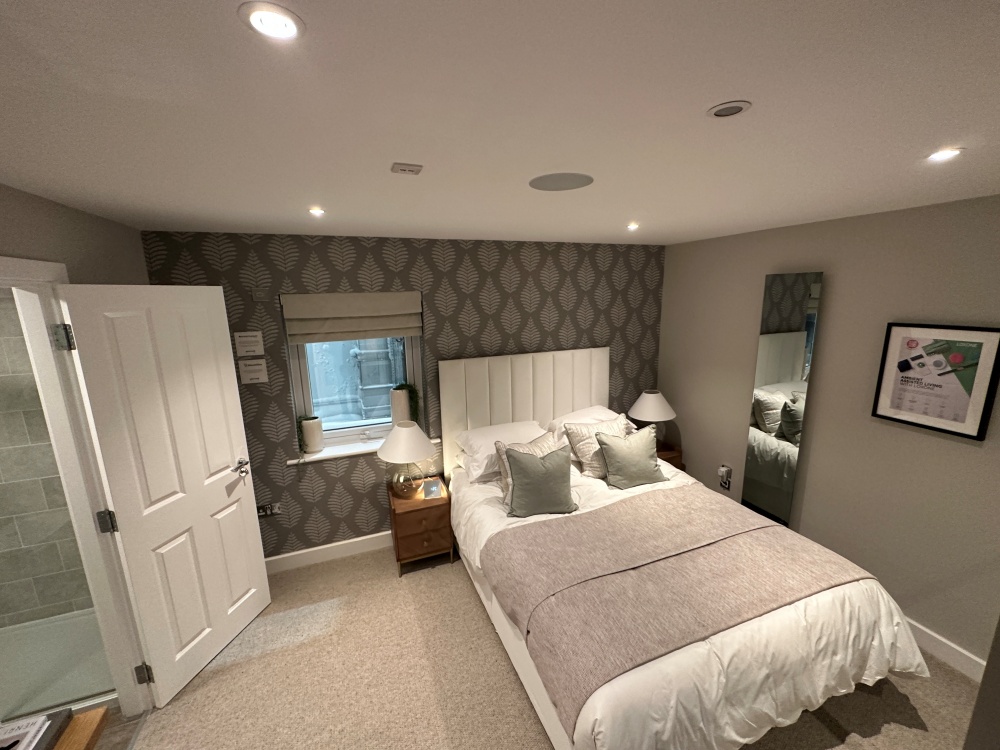
© Saint-Gobain Ltd
Here’s a bullet point list of what Loxone does in eHome2:
🟢 The Miniserver, Audioserver, and Modbus RTU is used for metering.
🟢 Utilises Modbus TCP for the solar PV inverter (Fox ESS hybrid with battery storage).
🟢 Communicates with the Vaillant VR921 gateway using
EEBUS, allowing control of operating modes, target temperatures, and monitoring of the outside and of hot water temperatures.
🟢 Controls power to the immersion heater using a Solid State Relay (SSR) with variable power control.
🟢 Manages zoned heating using Valve Actuators and the intelligent room controller (IRC) for wet heating (excluding radiators, except for one radiator in the hallway as they are utilizing a new technology called ThermaSkirt).
🟢 Controls infrared heating panels through smart sockets, providing energy monitoring capabilities.
🟢 Controls infrared coving in the edges of the top of the room, which is controlled by a smart socket.
🟢 Controls ThermaSkirt and the kickboard wet heating in the kitchen using Valve Actuators.
🟢 Monitors energy usage for various appliances, including heaters, electric shower, Curv hot water tank, cooker extractor hood, dishwasher, washing machine, fridge/freezer, and network rack/cabinet – all through smart sockets.
🟢 Utilises water sensors for leak detection and employs a relay to control the solenoid, enabling automatic water supply shut-off in the case of a leak being detected.
🟢 Monitors and controls the usage and charging of the electric vehicle (EV) charger.
🟢 Controls the Silent Gliss blinds and curtains using the Shading Actuator Air.
🟢 Manages ventilation based on humidity, presence, and cooking activities.
🟢 Uses a combination of Smart Sockets and Nano 2 Relay Trees to control the two ventilation systems (MEV and MVHR) and Belimo damper actuators.
🟢 Utilises Door & Window Contacts throughout the house as part of the smart burglar alarm features and to turn off heating if a window is left open in that room
🟢 The Weather Station outside monitors the temperature as part of the control for the Vaillant heat pump.
🟢 Includes a Loxone intercom and a keypad with NFC functionality for access control.
🟢 Monitors energy consumption of every circuit coming out of the distribution board using Modbus metering, providing insights through statistical analysis and graphs.
Loxone’s involvement in eHome2 goes beyond just a present-day research collaboration, it has great significance for the future of new build housing with Loxone significantly contributing to Barratt Developments’ exploration of their future housing offerings. By incorporating Loxone’s cutting-edge technology, with it’s powerful energy management qualities, eHome2 sets a new standard for what Barratt can offer customers in terms of smart home features and the energy efficiency these provide their home.
Through the research conducted in eHome2, Barratt Developments gains valuable insights into the benefits home automation can play in new build homes. This collaboration allows Barratt to identify a solution that will reduce a home’s running costs, enhance the energy efficiency, and redefine the technology they can provide to homebuyers without making life at home more complicated.
Loxone’s contribution to eHome2 empowers Barratt Developments to deliver homes that meet high technological standards while addressing sustainability and energy efficiency concerns. Together, they are pioneering a new era of widespread housing, providing customers with enhanced living experiences and reduced environmental impact.
Saint-Gobain UK & Ireland partnered with Barratt Developments on this project and it has a long-standing relationship with the University of Salford. This makes for synergy in sharing insights between the various brands and companies which are working to identify how various aspects of the build and the technologies within can all contribute to meeting the Future Homes Standard. We’re proud to be a part of controlling the system in a house like this because the brands and solutions that Saint-Gobain bring to this project for the physical construction of the project make for a house that can truly benefit from the likes of zoned temperature control, and passive heating and cooling automated by Loxone.
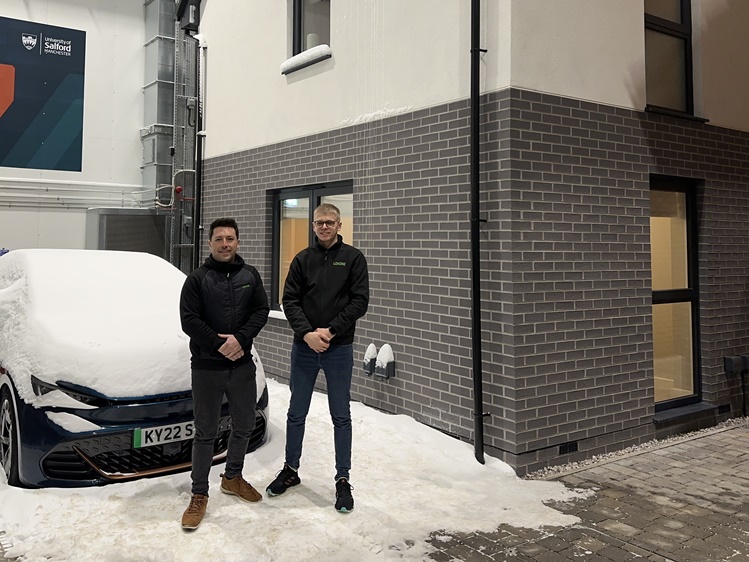
Left: Zach Meek, Owner at Zmart Hohm Ltd – responsible for the design & installation of the Loxone hardware at eHome2. Right: Cameron Drew, Head of Commercial Projects at Loxone UK – responsible for the programming of the Loxone installation.
How Loxone helps the University of Salford conduct the research:
Due to the great in-depth data tracking needed the Loxone ecosystem is responsible for gathering and measuring a lot of inputs and outputs. For example, a temperature sensor in each Touch switch measures the temperature in each room to ascertain would-be levels of comfort. This data is then displayed in the Loxone App allowing researchers to track the details of the conditions in eHome2 as the climatic conditions in the chamber are varied, without entering the chamber or home itself.
Loxone’s assistance to the University goes beyond the capabilities of a standard home automation system. The university’s overall research focuses on testing the benefits of automation versus manual conventional control. Loxone plays a crucial role in this research by enabling the setup of different profiles that allow the system to behave differently based on what is being tested.
One aspect of the research involves testing and comparing ventilation systems, such as Mechanical Extract Ventilation (MEV) and Mechanical Ventilation Heat Recovery (MVHR). Loxone’s flexibility allows for the creation of separate profiles to test each system independently. Regardless of which system is being tested, the actual zoned heating system from Loxone is also part of the research; with individual room control and temperature reading – instead of relying on conventional temperature readings from a single location in the house, such as the hallway.
When the University researchers want to switch between the MEV or MVHR, there are manual checks within the home that need to be done which can’t be automated. For this, when Loxone gets the request to change the ventilation system, it first triggers a text-to-speech message for the checks to be done manually. Once someone performs these manual actions/checks, they can confirm as such by pressing a dedicated confirmation button which then allows for Loxone to handle the rest of the changeover.
During testing, the University simulates a family living in the house by controlling the hot water tank. Instead of just heating up the tank, Loxone valve actuators actually enable a further degree of simulation by regulating the flow of water from taps, showers, and baths. While it is not possible to simulate a toilet flushing, the University replicates the equivalent water usage by running the corresponding amount of water through a tap.
Additionally, the University employs its own measuring devices that naturally consume power/energy that wouldn’t equate to the simulation of the energy use of an occupant family. To accurately capture the usage of these research devices in the results (so that these measurements can be excluded and analysed separately), Loxone smart sockets are used throughout.
You can see from the above how Loxone is being used both as a home automation system to provide comfort and automation to the would-be occupants, but also how that same hardware has been programmed to offer next-level functionality to the University – which makes for a pretty multifaceted offering.
Loxone’s extensive data collection capabilities provide the University with valuable statistical data, including temperature, humidity, CO2 levels, power, and energy usage. The University receives this data via email, empowering them to analyse and utilise it effectively in their research endeavours. Retrieving this data has been specifically commissioned for the project, whereas the norm for Loxone would be that the data doesn’t leave the installation – ie. the homeowner’s data is stored locally on the Miniserver and never shared externally.
Through its advanced automation capabilities and seamless integration with various systems, Loxone greatly assists the University in conducting in-depth research and testing scenarios that go way beyond the capabilities of a standard home automation system. This is a great representation of the Loxone system’s power, flexibility and open nature.
Zach Meek from Zmart Hohm Ltd spearheaded the inclusion of the Loxone solution in the eHome2 project. Here he is talking us through the project timeline:

© Saint-Gobain Ltd
Initial pitch to win the project:
Back in April 2019 I made an introduction between Saint-Gobain & Loxone to demonstrate the power & versatility that Loxone can provide as a control & monitoring system for future projects. This eventually led onto the opportunity to get involved within a world class testing facility – Energy House 2.0.
The initial brief was to provide a system to monitor electrical consumption throughout the property, from Circuit to appliance. Also, switch between different renewable technologies for ease of use without any electrical / mechanical alterations on site. Of course with Loxone, we have the ability to provide a lot more… And we did.
Project planning:
The Zmart Hohm design included:
⚡ 1 x Technology colour coded layout plans
⚡ 5 x Wiring schedules with cable unique ID’s
⚡ 167 x Cables
⚡ 1,814 x Individual connections!!
⚡ 2 x ‘Site Ready’ Zmart Hohm panels
Every cable & connection carefully designed to fully integrate, optimise, monitor and automate all of this fantastic innovative technology within the house of the future – eHome2.
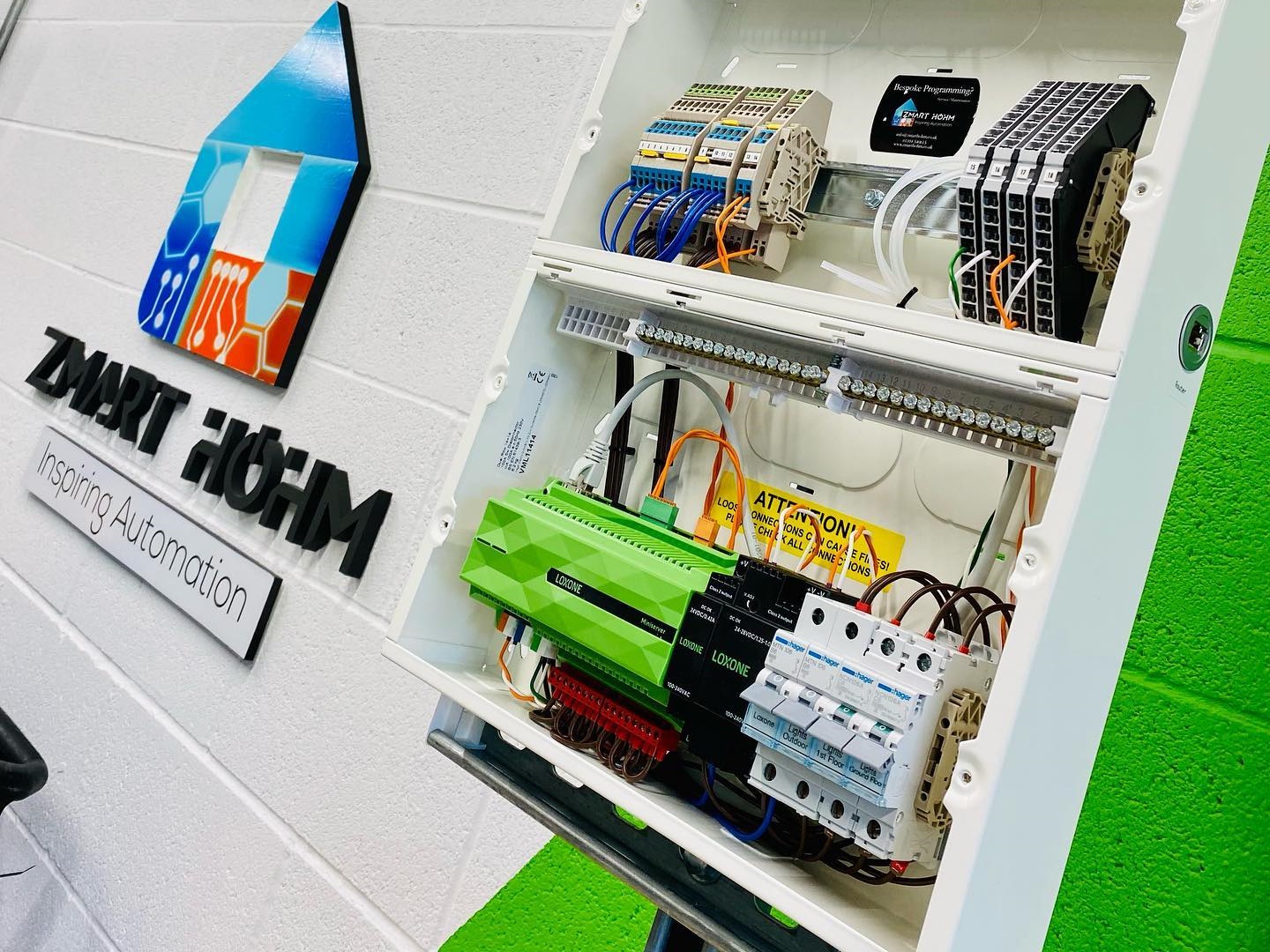

© Zmart Hohm

© Zmart Hohm
The Install:
Working alongside a Barratt electrical contractor we supported the install with several key visits throughout the build stage. Particularly at the beginning of 1st fix and just before plasterboard stages to check all wiring.
Building panels offsite in our workshop guarantees quality control & the innovative design allowed the electrical contractor to fully install one of the most complex 3 bedroom properties in the UK without any training, this maintained the build schedule, minimised labour onsite & reduced wiring using Loxone Tree topology.
Future with the project:
I’m really excited to see the future data released from the University of Salford. I truly believe that automation has a key part to play in the modern home, particularly with preventing overheating / maintaining comfort for occupants and overall energy management. Loxone are green by name and we are green by nature so it was an absolute pleasure to be involved with eHome2.

© Saint-Gobain Ltd
The Main players in the Collaboration:
The eHome2 project represents a leap forward in sustainable housing. It has provided a platform for smart technologies and enabled us to learn how to optimise and connect the utilities.
With Loxone’s smart control system, designed & installed by Zmart Hohm, we’re not just building homes, we’re designing future-ready living spaces that prioritise comfort, efficiency and environmental responsibility. Given the abundance of technology in the home, we needed a solution that seamlessly merged the various components of smart technology as well as the complicated heating, hot water and ventilation systems into a user-friendly and intuitive system.
Loxone’s system is making it easier for the occupant and connects the home functionality for future proofing the home. The future of home automation is here, and it’s incredibly exciting.
As the UK’s leading national sustainable housebuilder, we’re passionate about making homes even more efficient to help protect the planet, use fewer resources, and create sustainable communities. The ground-breaking partnerships we’ve built to create eHome2 within Energy House 2.0 – including with Loxone – are key to our roadmap to net zero.
Building eHome2 within the world’s largest climate-controlled chamber provided an opportunity test the most innovative products in an environment that speeds-up research by replicating 95% of the world’s future climates.
As extreme temperatures become more common, the revolutionary Loxone system can passively heat rooms using solar gain by lifting the blinds before bringing on the heat source. Or in a heatwave, it can also cool rooms automatically by detecting the temperature in the home and using shading and ventilation to make the home comfortable for our customers.
With the average consumer fitting a lot of technology into the modern home, there is a potential for conflict between technologies, with multiple apps or interfaces on the wall. The Loxone control system automates the eHome2 to maximise the efficiency of all technologies installed, without any input required from the homeowner – this is the brain of the home.
The smart system controls everything from heating to TVs, lighting, audio and window blinds. Loxone can use excess PV generation to heat hot water or charge an electric vehicle for free. It can even detect when lights or the heating have been left on, when you are out of your home.
Together with Loxone, we’re working hard to see how we can save our customers money on their energy bills and enable them to live more comfortably
Energy Management is baked into the core foundation of Loxone so it was a perfect match for us when designing the house of the future alongside Saint-Gobain & Barratt Developments, I strongly believe there is no other solution available on the market today that could of achieved what has been done with Loxone technology on the eHome2 project.
Loxone has allowed us to create the perfect eco-system of technology within eHome2, not only has Loxone provided the ability to integrate all of this innovative technology but also optimise, automate and monitor absolutely everything from the heat pump to the shower head!
With Loxone being a leading energy management & building automation solution, the Miniserver is the brain of eHome2. Within eHome2 there are several technologies which need to work harmoniously and others which are being compared for their efficiency and controllability, so there was a need to isolate these during testing. Loxone is orchestrating the Lighting, Heating, Ventilation, Shading, Audio, Energy Management, Access, Safety & Security whilst providing monitoring with statistics, graphs, and control via the Loxone App with a familiar interface for the user.
Working alongside Zmart Hohm we have brought eHome2 to life. The house can now operate intelligently with minimal human interaction making for a familiar comfortable home. Zmart Hohm designed detailed drawings, schedules, and documentation for the Loxone and Electrical installation, then delivered the Loxone panel to site making for a seamless experience for the electrician onsite. I worked alongside Zmart Hohm during the commissioning and configuration process to deliver all the features required to allow eHome2 to set the standard of future homes.
We invited the University of Salford to let us know their thoughts about Loxone’s involvement in the eHome2 project. Naturally, as they are a University body they couldn’t speak specifically to the brands involved.

The Energy House 2.0 project is being part-funded by the England European Regional Development Fund as part of the European Structural and Investment Funds Growth Programme 2014-2020.
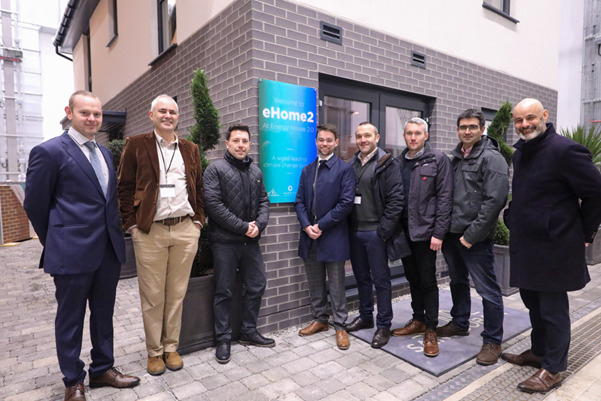
© Saint-Gobain Ltd
Left to right: Eion Reynolds (Senior Site Manager, Barratt Developments), Professor Richard Fitton (Technical Lead for Energy House 2.0, University of Salford), Zach Meek (Automation Engineer, Zmart Hohm), Daniel Shea (Assistant Site Manager, Barratt Developments), Tom Cox (Technical & Developments Director, Saint-Gobain Offsite Solutions UK & I), Joe Lewis (Offsite construction consultant and director, Optima offsite Ltd), Alex Baines (Interior Solutions, Saint-Gobain) and Oliver Novakovic (Technical & Innovations Director, Barratt Developments).
Press Release:
Click below to view our official press release regarding Loxone’s involvement in the Energy House 2.0 project with eHome2.
Contact us about your Commercial Project
If you would like to discuss how the Loxone system could work in your installation, please complete the form for a member of the team to assist you further.
"*" indicates required fields
Gallery:











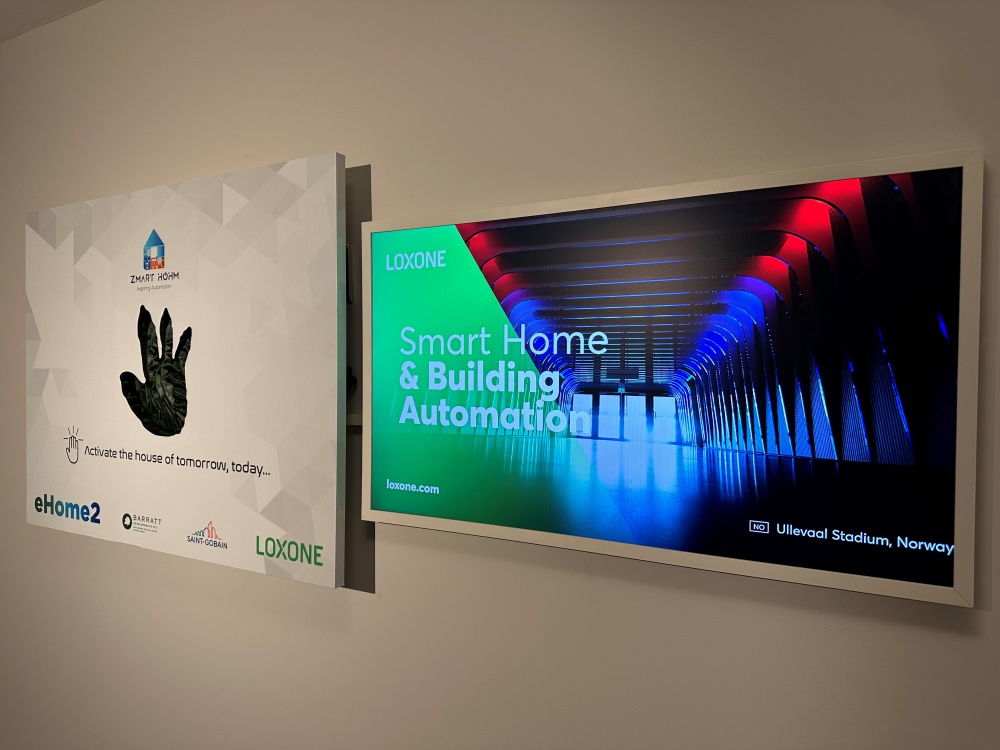


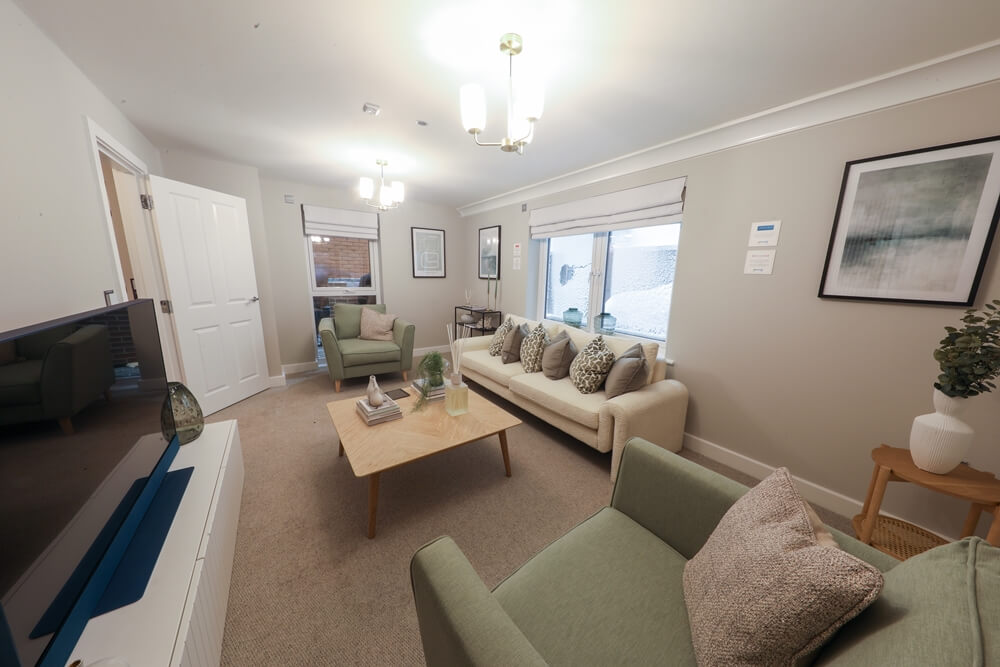
© Courtesy: Saint-Gobain Ltd / Zmart Hohm Ltd

The project is receiving up to £8,244,043 of funding from the England European Regional Development Fund as part of the European Structural and Investment Funds Growth Programme 2014-2020. The Ministry of Housing, Communities and Local Government (and in London the intermediate body Greater London Authority) is the Managing Authority for European Regional Development Fund. Established by the European Union, the European Regional Development Fund helps local areas stimulate their economic development by investing in projects which will support innovation, businesses, create jobs and local community regenerations. For more information visit https://www.gov.uk/european-growth-funding.




